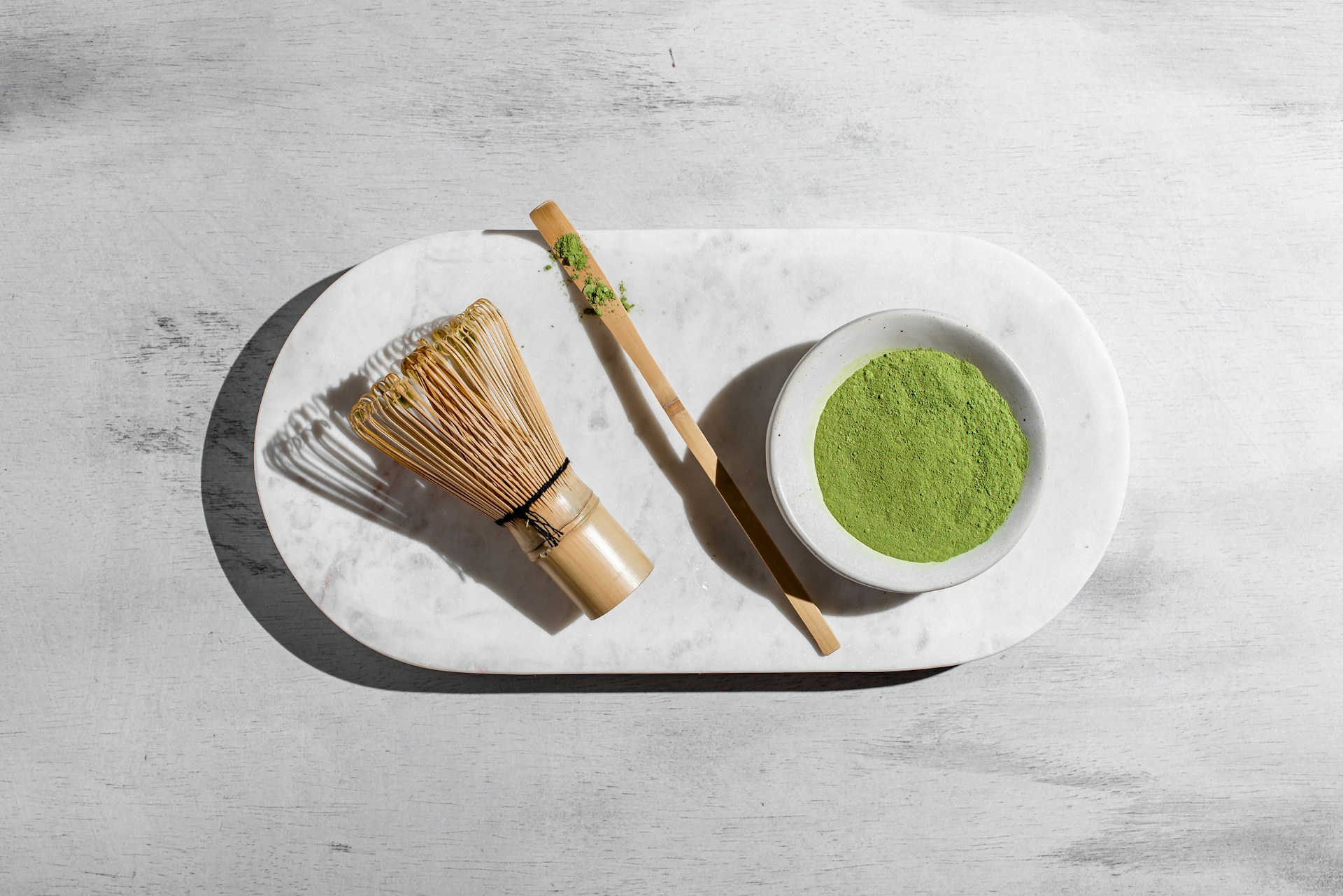Matcha has become a familiar sight in cafes, supermarkets, and home kitchens, a luminous green powder whisked into water or milk until it turns frothy and smooth. Its popularity is not only about aesthetics or trend cycles. People reach for matcha because it promises energy that feels steady rather than frantic, a small daily practice that can be both comforting and functional, and a set of nutrients that support the body without demanding a full lifestyle overhaul. When you look closely at what matcha is and how it works, you find a beverage that blends chemistry, culture, and habit in a way that makes sense for modern routines.
Matcha is made from shade grown green tea leaves that are steamed, dried, and stone ground into a fine powder. Unlike regular steeped tea, where you remove the leaves after extraction, drinking matcha means ingesting the whole leaf. This simple difference explains much of its appeal. The entire matrix of compounds found in the leaf is delivered in the cup, including caffeine, L theanine, and a family of antioxidants known as catechins. Because you are not discarding the plant material, the experience feels fuller on the palate and more sustained in the body.
The first benefit many people notice is how matcha affects attention. Caffeine is present, but it is accompanied by L theanine, an amino acid that supports a calm, alert state. Coffee often delivers a fast rise in energy followed by a steep drop. With matcha, the curve tends to be gentler. Instead of a spike and a crash, most people report a smooth lift that helps them settle into focused work or study. This is not magic. It is a straightforward interaction between stimulatory and calming compounds that, taken together, support concentration without a jittery edge. Students, knowledge workers, and anyone who needs sustained mental clarity often find this combination useful.
Antioxidant content is the second headline feature. Catechins, especially EGCG, are central to green tea’s reputation for cellular support. When people talk about antioxidants, the conversation can veer into exaggerated claims, but the core idea is not controversial. These compounds help neutralize oxidative stress, which is a normal byproduct of living, moving, eating, and encountering the environment. Because matcha involves the whole leaf, the amount of catechins per serving can be higher than a typical cup of steeped green tea. You do not need to frame this as a miracle. It is more accurate and more sustainable to think of it as daily maintenance for cells and tissues.
There is a practical skin angle as well. While no beverage can replace sunscreen and sensible routines, the antioxidants in matcha contribute to a supportive environment for the skin. They sit alongside hydration, sleep, and a balanced diet as quiet helpers rather than dramatic fixes. Many people pair a morning glass of water with a matcha session, and this sequence is often enough to produce a subtle improvement in how the skin looks and feels over time.
Matcha also participates in the ongoing conversation about gut health. Tea polyphenols can act as prebiotic compounds, offering nourishment to beneficial bacteria. This does not transform the microbiome overnight, but as part of a wider pattern of fiber rich foods and diverse plant intake, matcha becomes one more nudge toward equilibrium. The absence of a harsh crash after drinking it can also reduce the urge for emergency snacking, which indirectly supports more consistent eating patterns.
Athletes and active people often use matcha as a pre workout option. The moderate caffeine level can sharpen reaction time and attention, while the L theanine component helps keep arousal within a manageable range. You can lift weights, run intervals, or practice a skill based sport without feeling overstimulated. The same profile explains why many people choose matcha for long meetings, extended study sessions, or creative work that demands a stable mental state. In each case, the goal is not maximum stimulation. The goal is a focused flow that can be sustained.
Ritual is part of the health story. Preparing matcha involves a short series of steps that ask you to slow down. Scoop the powder, add hot water, whisk until small bubbles rise, and inhale the grassy sweetness before you take a sip. Even if you use an electric frother or a shaker bottle, the sequence remains intentional. This minute or two of attention creates a boundary in a day that can otherwise feel boundaryless. The health benefit here is small but real. A clear cue, a deliberate action, and a sensory payoff can reduce mental noise and signal to the brain that it is time to focus.
Quality matters, and it does not need to be complicated. Ceremonial grade matcha is softer, sweeter, and best suited to whisking with water. Culinary grade is stronger and works well in smoothies or baking. Fresh matcha smells like fresh cut grass after rain. If your drink tastes dull or bitter, the powder may be stale or of lower grade. Storage in an opaque, airtight container helps preserve flavor and nutritional value. Sourcing from producers who treat farming and processing as a craft can also reduce the risk of contamination and off flavors. These small choices add up to a better experience and a better return on your money.
There are common pitfalls to avoid. Many cafe versions of matcha arrive as dessert in disguise. Syrups, sweetened powders, whipped cream, and candy toppings can turn a balanced drink into a sugar bomb. If your goal is health, keep the recipe simple. Water and matcha is the cleanest option. Milk can add texture and protein if you enjoy that style. Sweeten lightly if needed, but make sweetness the accent rather than the theme. Serving size matters too. Start with a half teaspoon and see how your body responds before increasing the amount.
Timing is another practical consideration. Matcha contains less caffeine than a typical cup of coffee, but it still contains enough to influence sleep in sensitive people. A morning cup fits most schedules. An early afternoon cup can help with a focused work block. An evening serving may not be wise if you struggle with sleep onset. Respect your personal response and adjust the clock accordingly.
Weight management often comes up in discussions about matcha. It is best to keep expectations realistic. Matcha is not a fat burning hack, but it can support habits that influence weight over time. A steadier energy profile may reduce cravings that come with sharp energy dips. A focused state can make workouts more productive. None of this replaces the fundamentals of diet quality, movement, and sleep. It can however make those fundamentals easier to maintain.
There is no requirement to abandon coffee if you enjoy it. Many people rotate between coffee and matcha based on the demands of the day. If you need volume and intensity, coffee may be the right tool. If you need clarity with edges smoothed, matcha may serve you better. Thinking in terms of tools rather than identities prevents unnecessary friction and makes healthy choices easier to sustain.
In the end, the health benefits of matcha come from a combination of compounds and behaviors. Caffeine and L theanine support calm focus. Catechins offer antioxidant activity that contributes to cellular housekeeping. The preparation ritual inserts a brief, mindful pause into a crowded schedule. Quality choices protect flavor and integrity. Simple recipes prevent sugar from stealing the spotlight. Timing respects your sleep. Every element is modest on its own, but together they form a pattern that improves the texture of daily life.
You can drink matcha for the taste, for the bright color, for the gentle energy, or for the reassuring routine that forms around it. You do not need to adopt a new identity or memorize a complicated protocol. Scoop, whisk, sip, breathe. The act is small and repeatable, and that is why it works. Health is often the sum of these small, durable choices, carried out day after day until they become part of who you are. Matcha fits neatly into that kind of life, offering support without spectacle and focus without strain.














